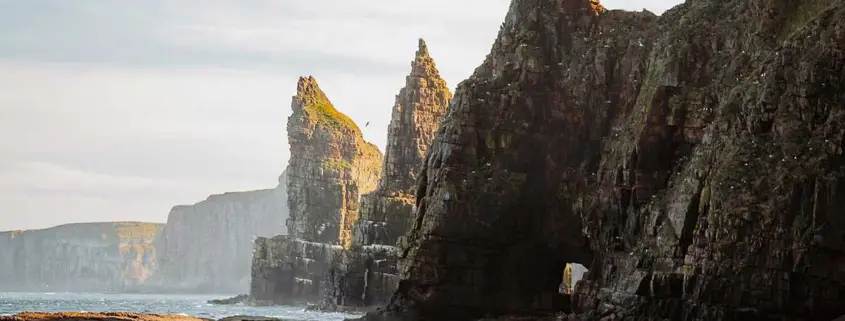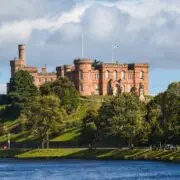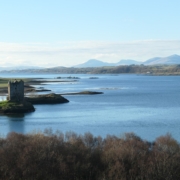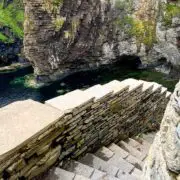Going to John O’Groats? Do Not Miss This!
One of the major highlights of going on the NC500 is taking the obligatory snap of yourself under the John O’Groats sign to show all your friends and family that you’ve been the most Northern point.
But….. Within just a 9 minute drive you would be missing out on something way more pretty than a sign post cemented in the ground at a commercial tourist attraction
Instead we want awe-inspiring beauty and we have this in spades!
Lets find out more, so you don’t miss these three off your NC500 tick list.
Three sights at Duncansby Head
You’ll need your walking shoes for all three of these, but as you’ll see in the photos shortly, all of them are well worth the less than10 minute detour from John O’Groats.
Just remember to grab your camera as all three of them will no disappoint, especially at dawn and dusk. This is the most North-Eastern tip of Scotland too. So smile to yourself once you have enjoyed these at the amount of people that drove to the very top of Scotland and missed these three out.
Duncansby Lighthouse
Put in ” Wick KW1 4YS” in the satnav and start here on your new journey.
Parking is near the end by the lighthouse and the second you get out, you’ll be able to see John O’Groats on a clear day. It really isn’t that far away at all.
Sticking with the Lighthouse for a few moments this lighthouse was built in 1924 by the engineer David A Stevenson. Then automated in 1977 (it flashes every 12s when in use).
During the first world war a temporary fog horn was set up here around 1914 and later replaced by a permeant one afterwards.
The light house was also attacked by a German bomber machine gun on the eve of the invasion of Norway. Thankfully no one was hurt and no damage was caused.
Duncansby Stacks
After leaving the lighthouse, continue around to the East of the coast line and you’ll come across the Duncansby bird cliffs which we’ll cover in a moment during the walk (its mostly all flat-ish).
After the birds, the main event for most of us is the sight of the Duncansby Stacks.
These are three huge +60M tall sandstone pyramids that reach up out of the sea.
These stacks have been made by the weather over thousands of years as they were part of the main land. A stark reminder that the coastline all around the United Kingdom is forever changing.
The tallest of the three Duncansby Stacks is known as “The Great Stack”.
Even on a less than ideal day, these three do not disappoint. If you’re lucky to catch these with mist or a sunset, then just… WOW.
Duncansby Bird Cliffs
When they say cliffs, they really mean “sheer drop” so be a little cautious here.
The bird cliffs are a surprisingly rectangular when you see them and have a variety of sea birds who use these cliffs for sanctuary.
Species of birds at Duncansby Bird Cliffs include:
- Guillemots
- Kittiwakes
- Puffins
Most of the bords use the cliffs as a nesting and roosting point, other species of birds drop in when passing by.
You can jump on a boat trip from John O’Groats and they’ll take you into the cliffs if the weather is calm enough.
So Don’t Miss Out
I know many of you will have driven possibly hundreds of miles to get to John O’Groats. Some of you may have even flown in from abroad.
So the sake of a 9 minute journey in the car, take a stroll around the most North-Eastern tip of Scotland and soak up the three Duncansby Stacks, the bird cliffs and spare a thought for that German bomber that must have drifted off coarse that solemn night over the Highlands.

Maximise Your NC500 Experience!
Our newsletter is packed with helpful tips and resources to help you save money and time when planning your NC500 experience. Sign up now and join our community of savvy NC500'ers.









Leave a Reply
Want to join the discussion?Feel free to contribute!